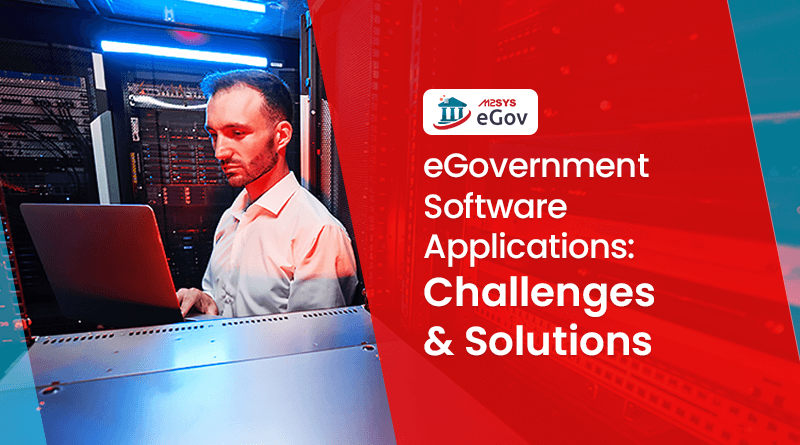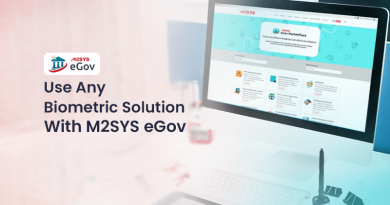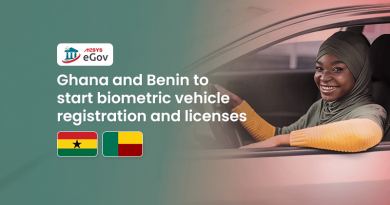eGovernment Software Applications: The Challenges and Solutions
The term eGovernment, eGovernance, and sometimes digital government, are creating buzz around the public sector in recent times. The widespread use of the internet and the introduction of AI have fueled this movement even more, and governments around the world are embracing this new way of governing countries. Today we will look into how e-government software applications work and what the challenges and potential solutions are.
What is eGovernment
When government agencies make better use of ICT information and communication technologies, they are engaging in eGovernment. Some definitions limit e-government to strictly Internet-based programs, while others focus on government-to-citizen communications. We don’t make that distinction here; all forms of digital ICT and all forms of government service are included.
Therefore, according to our definition, governments have been engaging in e-government for more than 50 years, since the first mainframe was installed at the Statistics Office. There was nothing different about it fifty years ago; we simply didn’t call it that. The three primary areas of e-government are:
- Streamlining government procedures
- The bridge between people and government services
- Interagency collaboration
These specifically address the issues of government being too expensive, inefficient, and ineffective; too self-serving, inconvenient; and too closed off from the rest of society.
How eGovernment Software Applications Work
Now we know what eGovernment is, and the question now is how eGovernment is established and how it works. For instance, using e-government software applications is a simple answer to this question. This kind of software application is used to streamline government processes and includes Web applications, mobile applications, desktop applications, and more. Using these applications, governments offer services for citizens and also manage their in-house processes along with interagency collaborations.
If you think about the manual process, the quality and speed of the services take a hit due to the sheer amount of paper pushing that goes on behind the scenes. To eradicate this issue, governments around the world have introduced eGovernment applications that aim to digitize the manual government process in different areas.
Now think about the services that governments offer. The list is never-ending and as the days pass, new services are added. It is not possible to digitize all the services offered by the government, but important citizen services should always be digitized to maximize efficiency. Here are a few areas that can be covered under e-Government:
- Birth Registration
- Child Immunization
- Death Registration
- The Law Enforcement System
- Marriage Registration
- Medical EHR
- Prison Management System
- Vaccine Registration
If we look at developing and underdeveloped countries, these are the most common implications of eGovernment applications. The developed countries have more advanced eGovernment implications, which include:
- Election Management
- Management of Law Enforcement
- Military Management
- Immigration Management
- Smart City Management
The e-government applications I mentioned here are not limited to those we have listed. Depending on the country, there could be significantly more or significantly less. As we all know, each country has its own set of processes and workflows that are unique to it. That’s why governments around the world are focusing on custom eGovernment software applications. Though the custom application has its advantages, it also has its own share of complications.
The Challenges of implementing e-Government Software Applications
As mentioned, different governments around the world have different needs and requirements that call for custom solutions. Developing custom solutions leads to lots of challenges that are unavoidable and sometimes lead to devastating results. Here are a few common challenges to implementing custom e-government software applications.
Cost: Cost is a key factor in limiting the spread of e-government in developing nations. Developing custom solutions requires a lot of investment in IT infrastructure. Maintaining a whole department of developers to build and maintain the applications is costly.
Accessibility: Some people are unable to use e-governance due to language difficulties and poor infrastructure in remote locations. Only about 10% of Americans are computer illiterate, whereas, in developing countries, nearly 90% of people cannot even use a basic smartphone. Another significant difficulty is the 25%–30% of the population who cannot read or write.
Developer Dependencies: Developing custom solutions creates lots of dependencies on developers. Most developers overpromise and underdeliver, and sometimes projects never get to the finish line due to difficulties in adding biometrics matching engines and scanners.
Despite the fact many shifts have occurred since IT was first introduced, there are still many bureaucrats, people, and politicians that are resistant to change and have divergent views on e-government.
The eGov Platform by M2SYS
M2SYS has developed the eGov platform keeping in mind the potential challenges that eGovernment solutions may face. The eGov platform is designed specifically for use in emerging and least-developed nations, bringing cutting-edge technology to government agency functions without putting pressure on software development resources or introducing security risks. No coding is needed to use the eGov platform, which is powered by artificial intelligence. Thanks to native applications and cloud solutions, it streamlines workflows and puts information directly in the hands of users.
The M2SYS eGov platform, which is “Ready to Deploy,” already has tons of apps that can be modified to fit the requirements of any government around the globe. The solutions may be tailored to fit individual needs in as little as two days, and they extend across the whole gamut of civilian and security-focused government departments. With the M2SYS eGov platform, the use of biometrics is super easy with any existing system or any other third-party system.










